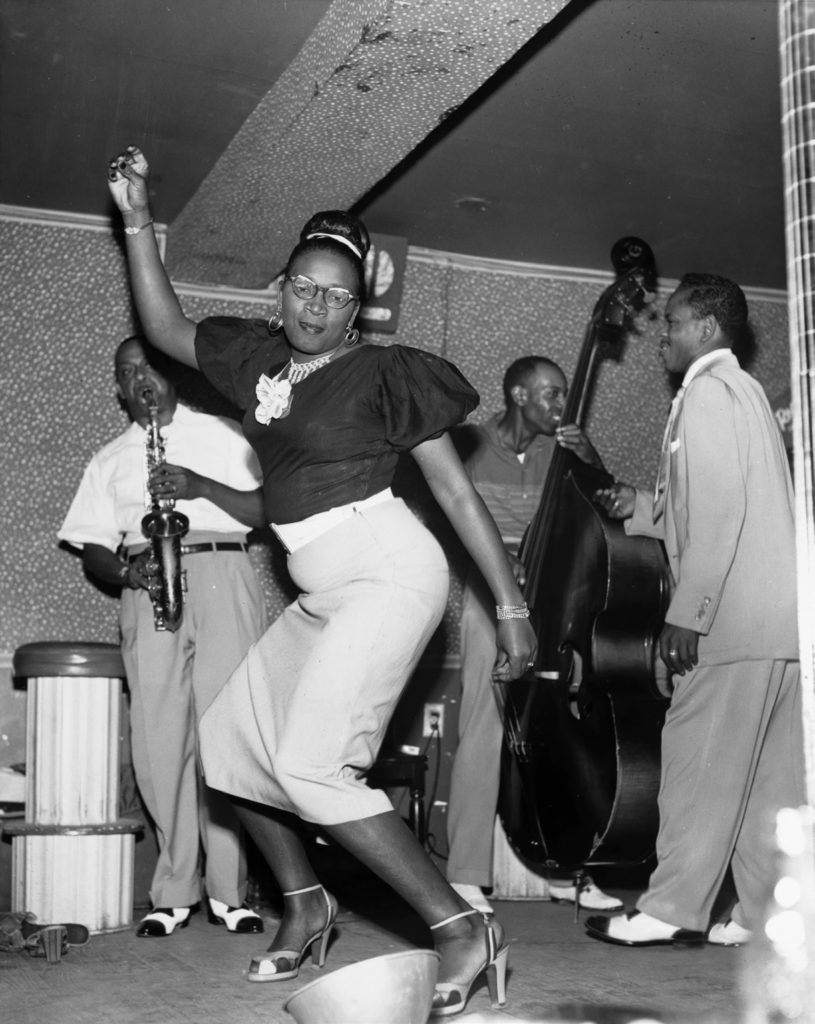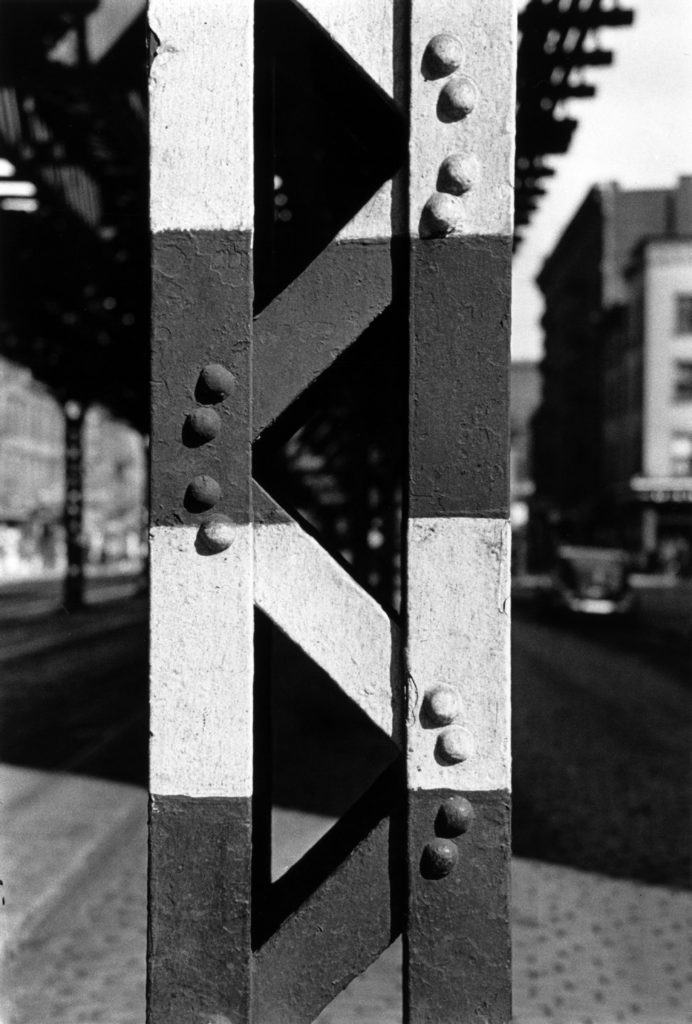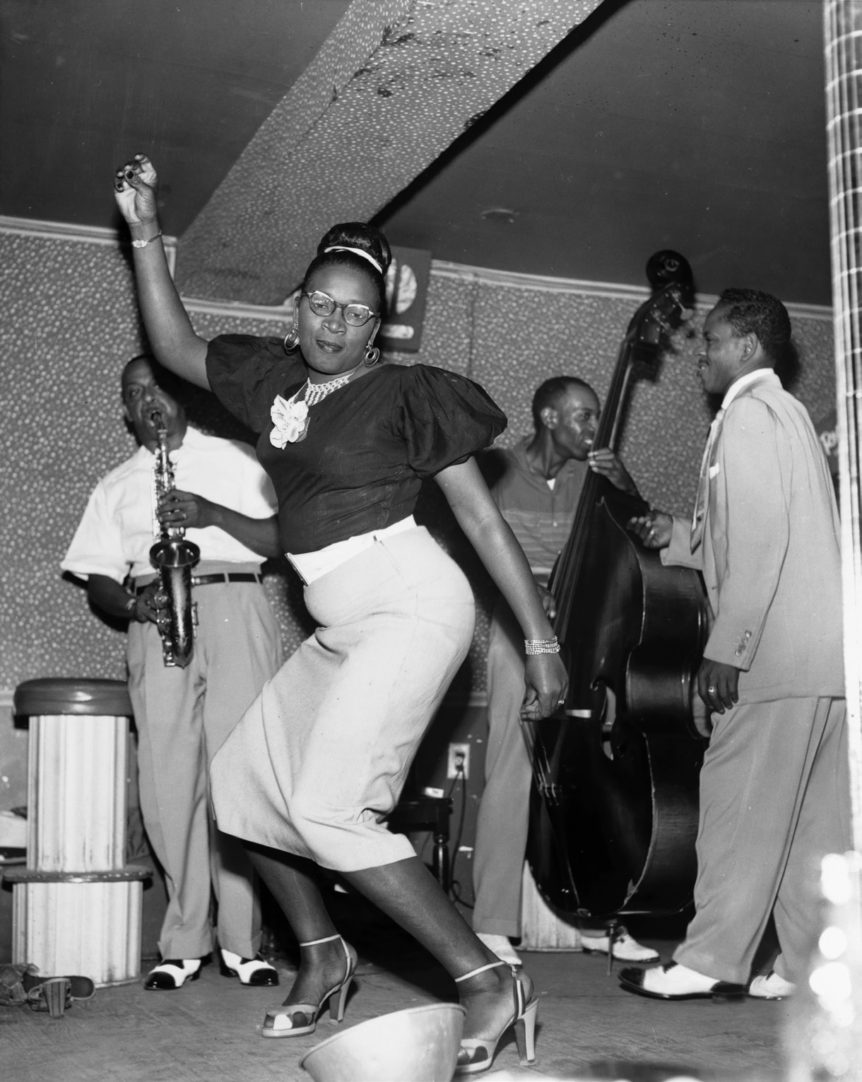
Dancer and Meyer Kennedy at the Caravan Club, New Orleans by Ralston Crawford (1906—1978), 1953. Nelson-Atkins Museum of Art, Kansas City, MO, gift of Neelon Crawford.
A pioneer of precisionist painting and geometric abstraction as well as a celebrated photographer, Ralston Crawford (1906–1978) was equally fascinated by mankind and the man-made. Both subjects—and a link between Crawford’s artistic practices—are explored in the exhibition Structured Visions: The Photographs of Ralston Crawford at the Nelson-Atkins Museum of Art.
There is a pensive stillness to his photos of the American industrial landscape in the middle decades of the twentieth century, which form the bulk of the show. Engines and other machines, grain elevators, and a Duluth scrap yardare transformed into abstract compositions; trusses, bolts, and gears become fields of geometry in these black-and-white images, some of which served as studies for Crawford’s brightly colored paintings and prints. His attention to the way light and shadow create distinct shapes marks him as a master of the darkroom, on par with other twentieth-century abstract photographers such as Herbert Bayer and László Moholy-Nagy.

Third Avenue Elevated by Crawford, 1948. Nelson-Atkins Museum of Art, gift of Hallmark Cards, Inc.
Complementing photographs of industry are Crawford’s pictures of scenes from daily life in working class New Orleans. In his images of jazz clubs, or a marching band, or a line of women in white dresses walking down the street, Crawford’s subjects seem both aware of and indifferent to his lens.
Brought together in this exhibition, images of industry combined with those who built it, work it, and live it prompt thoughts on the relationship between people and machines. Crawford’s ability to find beauty in both is a testament to his technical skill behind the camera and an overall vision that relates, rather than separates, the two. In the twenty-first century, when technological devices have all but become new limbs, stepping back to examine our connection with our built environment through Crawford’s work proves both meditative and insightful.
Structured Vision: The Photographs of Ralston Crawford• The Nelson-Atkins Museum of Art, Kansas City, Missouri • October 26 to April 7, 2019 • nelson-atkins.org

